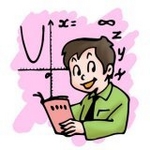
Worksheets and No Prep Teaching Resources
Reading Comprehension Worksheets
History of Mathematics

History of Mathematics
 Worksheets and No Prep Teaching Resources Reading Comprehension Worksheets History of Mathematics |
 History of Mathematics |
| edHelper's suggested reading level: | grades 9 to 12 | |
| Flesch-Kincaid grade level: | 10.26 |
|
Mathematics in Western Europe - Intrigue and Integration
By Colleen Messina |

|
 |
Create Weekly Reading Books
Prepare for an entire week at once! |
| Leave your feedback on Mathematics in Western Europe - Intrigue and Integration (use this link if you found an error in the story) |
 |
History of Mathematics
|
 |
High School Reading Comprehensions and High School Reading Lessons
|
 |
Social Studies
|